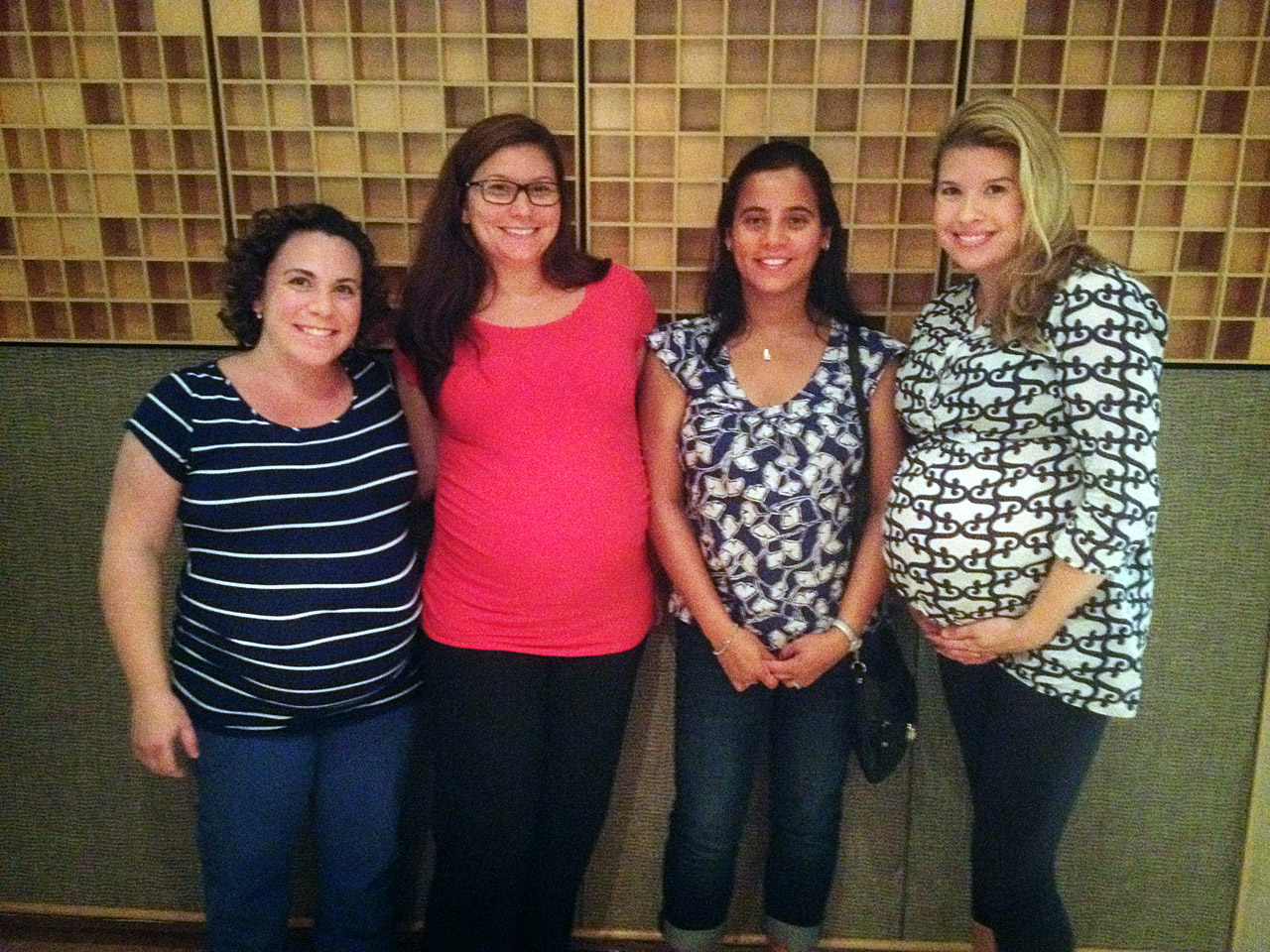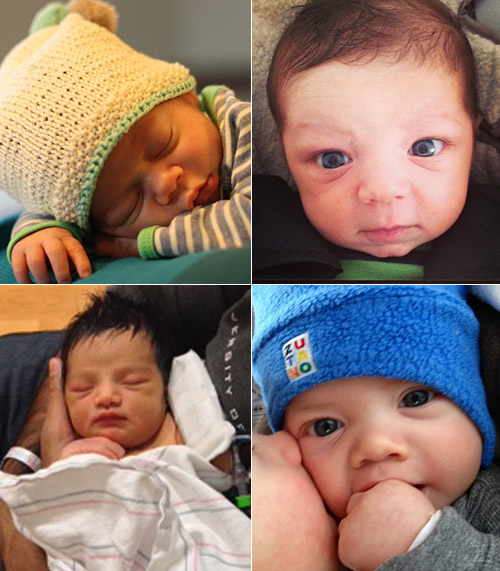Advertisement
5 Measures To Compare Childbirth At Mass. Hospitals
ResumeChildbirth is one of the most important medical events of our lives, if not the most important. We want to make sure our moms and babies get the best possible care. But we often choose that care based solely on reputation or word of mouth.
A WBUR data analysis aims to offer more. We've pulled together childbirth quality data that, for the first time, enable pregnant women and their families to compare hospitals across Massachusetts.
Much of this information is public, but it's scattered here and there or buried in state reports. WBUR also collected data from the 47 hospitals in Massachusetts that deliver babies.
What We Measured
After consulting medical experts and moms, we selected five measures to compare hospitals that perform deliveries in Massachusetts:
1 - Early elective deliveries (source, collected and shared by The Leapfrog Group)
2 - First-time Cesarean sections (source, pages 84-85)
3 - Vaginal births after a C-section, or VBACs (source, pages 84-85)
4 - Episiotomies (source, collected and shared by The Leapfrog Group)
5 - Exclusive breast-feeding (source: collected by WBUR).
(We did not include some mom-friendly measures — jacuzzis, private rooms or 24-hour help with breast-feeding — because it’s hard to collect this information consistently for each hospital. But we want to make sure patients help drive this quality movement, so fill out our survey and we'll make sure your preferences are part of this public record.)
How We Chose These 5 Childbirth Measures
We started by asking childbirth quality experts: What do you want to know about hospitals that deliver babies? We heard the same answer again and again: Hospitals should not be scheduling early deliveries unless they are absolutely necessary. Babies need the full 39 weeks in the womb.
"There is a national movement, because there has been an overuse of this procedure, to reduce early elective deliveries," said Celeste Milton, associate project director in the Center for Performance Measurement at The Joint Commission, a national group that accredits hospitals. She leads a project at The Joint Commission that will begin collecting information on five childbirth quality items, including early elective deliveries, next month.
Many hospitals in Massachusetts have committed to ending early elective deliveries and some have reached zero, but most are not there yet.
Our second measure, first-time Cesarean sections, is more controversial in part because it has become so common. A C-section requires incisions in the mother's abdomen and uterus and "costs more money [and] increases length of stay," Milton said. She added that "there can be increased risk with having a surgical procedure."
Milton says it’s important to look at how often hospitals perform C-sections, especially for first-time moms. If they have a second or third child, those deliveries are also likely be C-sections. The chances of rupture and bleeding increase with each subsequent birth.
Childbirth quality expert Carol Sakala has another reason hospitals should avoid C-sections: They may increase a baby's risk for chronic diseases. "So far they are asthma, allergy, obesity and type 1 diabetes," she said, "all roughly 20 percent increased likelihood for Cesarean-born babies."
Our No. 3 measure, vaginal births after a C-section (VBACs), is of interest to many mothers.
Sakala helped the National Quality Forum, a nonprofit that reviews and endorses quality measures, create a list of ways to assess a good birth. Our fourth and fifth measures come from the nonprofit's list.
An episiotomy is a cut made by a doctor to enlarge the mother's vaginal opening during birth, a practice that has grown out of favor among younger obstetricians. And exclusive breast-feeding measures the percentage of babies fed nothing but breast milk while in the hospital.
In the end, we chose the five measures based on what experts say is important, available data and what pregnant women say they want to know. Sakala says if there is any group of patients that will use quality information to shop for the best care, it’s pregnant women.
"They’ve got nine months or so to investigate and take charge and plan," she said. "If we can help childbearing women to have a sense about becoming savvy health care consumers, they can go on to make wise decisions in other areas."
What Expectant Moms Said About The Findings

When you take a look at the information we do have about childbirth quality, you’ll notice big differences among hospitals. Last year, we spoke with four then-pregnant women who reviewed the data at WBUR's studios.
"The episiotomy rates are terrifying," Betsy Deitte, who was pregnant with her third child, said with a nervous laugh. Many doctors will tell you an episiotomy is a thing of the past. But that’s not what the numbers show.
Deitte remembered that women generally heal faster from a natural tear.
"The fact that at some of these hospitals a third of women are getting an episiotomy seems not very helpful as far as getting a woman to heal and feel better sooner," she said.
Our four moms-to-be didn't care too much about early elective deliveries. First-time C-section rates, where there’s a big spread among hospitals, did catch their attention, however. But Sara Tucker, a first-time mom from Quincy, was uncertain about the numbers.
"With C-section rates you never know what’s behind those numbers," she said. "Those could all be C-sections that needed to happen."
Hospitals do not report which C-sections were medically necessary, but it's widely accepted that most hospitals perform too many of them. The World Health Organization says no hospital should be doing more than 15 percent of births via a C-section because higher rates are not linked to any benefit for the mother or child.
Our analysis finds that all but four hospitals in Massachusetts are doing more than 15 percent.
Sutanuka Lahiri, who was expecting her first child, wanted to know why. "I wish these numbers had age, complication and why [somebody would] just choose C-section," she said.
Hospitals don’t offer that information.
There’s also a dramatic difference in the rate at which women go back to a vaginal delivery after having a C-section.
And finally, breast-feeding. Experts are beginning to check the percentage of women who intend to breast-feed and succeed, at least while in the hospital.
Deitte said asking who succeeds isn't helpful.
"'How much time do you have with a lactation consultant?' " is what Deitte would ask. "I feel like that would be way better" to help women breast-feed, she said.
"Or, if [the lactation coaches/consultants] are actually there in the hospital," Lahiri said.
"Available, 24/7," added Rebecca Loveys, another expectant mother.
Lahiri and Loveys wanted hospitals to send breast-feeding coaches to their homes.
"That’s when the problems really come up," Loveys said, "when you go home and you’re clueless. Your baby is crying and you’re afraid your milk hasn’t come in, you need to call [coaches] and cry."
These moms felt strongly that insurance should cover the cost of breast-feeding coaches, as well as doulas — birthing coaches — to help during and after birth. And they all nodded in agreement when Loveys said she wanted a hospital that will follow her direction.
"For me, it’s just important that the support is there," Loveys said.
Lahiri said looking just at hospital quality information may not be helpful for many women because their "doctor kind of advocates where you finally end up." She and Deitte cautioned that quality numbers for a hospital wouldn’t tell you everything you'd need to know about where you’d be comfortable delivering your baby.
"To me," Deitte said, what's "more important than a hospital’s C-section rate is your relationship with the practice and what’s going to happen."
Loveys nodded. "Yeah, your care provider, it’s really important to ask those questions before you end up in labor."
Loveys asked a lot of questions and factored in some of the things experts say are important. In the end, though, she chose based on comfort and went to the hospital with the best birth tub and no limits on how long she could stay in it.

"They said, 'You can get in the tub whenever you damn feel like it,' " Loveys said, laughing. "And so that was like, ding, ding, ding, we got a winner."
Loveys chose Mount Auburn Hospital, in Cambridge. Deitte selected Newton-Wellesley Hospital. Tucker and Lahiri both picked Beth Israel Deaconess Medical Center in Boston.
There is also a big difference in the cost of deliveries among the state's hospitals. Insurers are required to quote you a price online or on the phone. The same requirement extends to hospitals, as of Jan. 1.
There is no way yet to compare the quality of individual physicians or midwives, but if you want to see how hospitals measure up when it comes to childbirth, we've got the numbers.
Note: Following our conversation, Loveys, Deitte and Tucker all delivered healthy boys — Zachary, Elliot and Gavin, respectively — and Lahiri delivered a daughter named Saina.
More:
